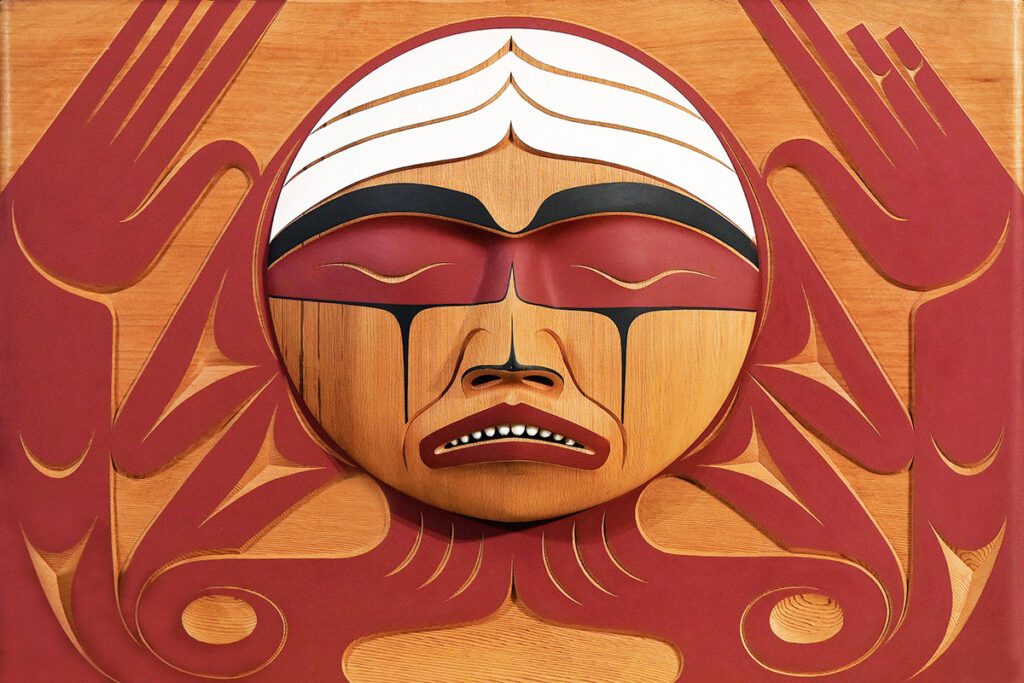Reconciliation
The Truth and Reconciliation Commission of Canada believes that for Canada to flourish in the 21st century, reconciliation between Indigenous and non-Indigenous Canada “requires sustained public education and dialogue…about the history and legacy of residential schools, Treaties, and Aboriginal rights, as well as the historical and contemporary contributions of Aboriginal peoples to Canadian society.” This page offers resources to support your own learning and reconciliation.
Image credit: Carved by Coast Salish artist Luke Marston, the Truth and Reconciliation Commission Bentwood Box is a lasting tribute to all Indian Residential School Survivors. The carved panels represent the unique cultures of former First Nations, Inuit and Métis students. Used with permission.
See also: Residential Schools in Canada, Indigenous Peoples in Canada.

- Last updated: March 11, 2025
ON THE SHELF
Check these out the next time you’re in the Library.
Honouring Reconciliation
Honouring Reconciliation
on the web
These recommended websites are free and easily accessible! All you need is an internet connection.
Reconciliation Education is the foremost educational tool for corporate, community, and classroom anti-racist training in providing the basic foundational 1:0:1 on reconciliation with authentic Indigenous voices.
Created by the CBC Indigenous Unit, Beyond 94 allows you to track outcomes on the Calls to Action, learn more about the residential school(s) that operated near their communities, and discover concrete examples of how Indigenous and non-Indigenous Canadians can work together. The project is a living resource as new documentaries, residential school survivor stories, ideas and community-based action around reconciliation are added.
"The aim of Circles For Reconciliation is to establish trusting, meaningful relationships between Indigenous and non-Indigenous peoples as part of the 94 Calls to Action from the Truth and Reconciliation Commission."
A tool to bring together First Nations and non-First Nations people and foster a spirit of cooperation, understanding, and action.
The Ministry of Indigenous Relations and Reconciliation leads the B.C. Government in pursuing reconciliation with the First Nations and Indigenous peoples of British Columbia.
The NCTR is a place of learning and dialogue where the truths of the residential school experience will be honoured and kept safe for future generations.
Born from the vision of Chief Dr. Robert Joseph, Gwawaenuk Elder, Reconciliation Canada is leading the way in engaging Canadians in dialogue and transformative experiences that revitalize the relationships among Indigenous peoples and all Canadians.
The Community Action Toolkits are intended to provide you with some guidelines and ideas on how to start the reconciliation conversation.
While reconciliation seems like a vague or unattainable concept, RTS breaks it down into small but impactful steps for everyone and anyone. Our work focuses on learning from the past, gaining the tools to make change in our present and being empowered to create a better future.
In order to redress the legacy of residential schools and advance the process of Canadian reconciliation, the Truth and Reconciliation Commission makes the following calls to action.
Whose Land is a web-based app that uses GIS technology to assist users in identifying Indigenous Nations, territories, and Indigenous communities across Canada. The app can be used for learning about the territory your home or business is situated on, finding information for a land acknowledgement, and learning about the treaties and agreements signed across Canada.
Truth and Reconciliation Commission of Canada: 94 Calls to Action (Chinese Translation)
